Average sizes and life expectancy for this breed:
It’s perfectly plausible to think that the Australian Shepherd breed is a native of Australia. However, these gorgeous and intelligent dogs actually hail from the Basque region of Spain. They were then carefully selective bred in the United States during the 19th century.
Today, the Little Blue Dog, or the Aussie as they are fondly referred to, has maintained its reputation as one of the best working dogs and family pets in the United States and around the globe.
Despite their popularity, Australian Shepherds are perhaps not the best choice of canine for first-time dog owners. This is because they are high-energy dogs that require appropriate training. They must be consistently exercised physically and mentally to prevent them from developing unruly behaviours due to boredom.
These energetic dogs really come into their own when herding sheep. Their athletic movements and commanding stature make it look like an effortless task.
The Aussie is a no-nonsense dog breed. They are hardworking, intelligent, and versatile. They will thrive in households where they can put their limitless energy and intelligence to good use. An owner does not need to keep a flock of sheep to work with an Australian Shepherd, but you do need to keep them busy.
See available puppies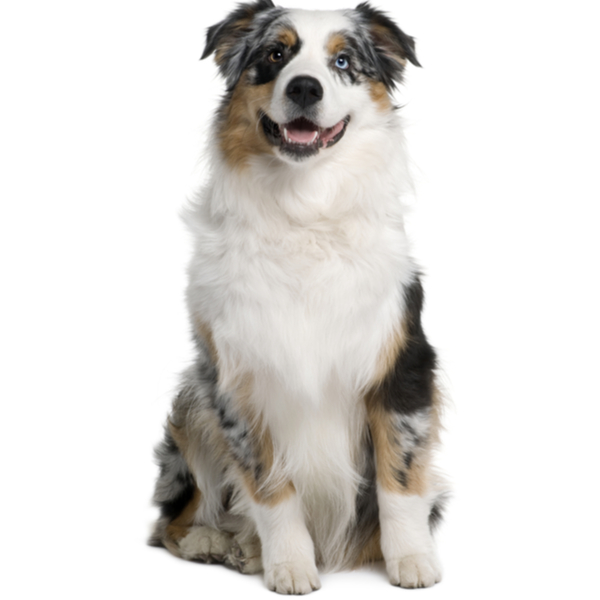

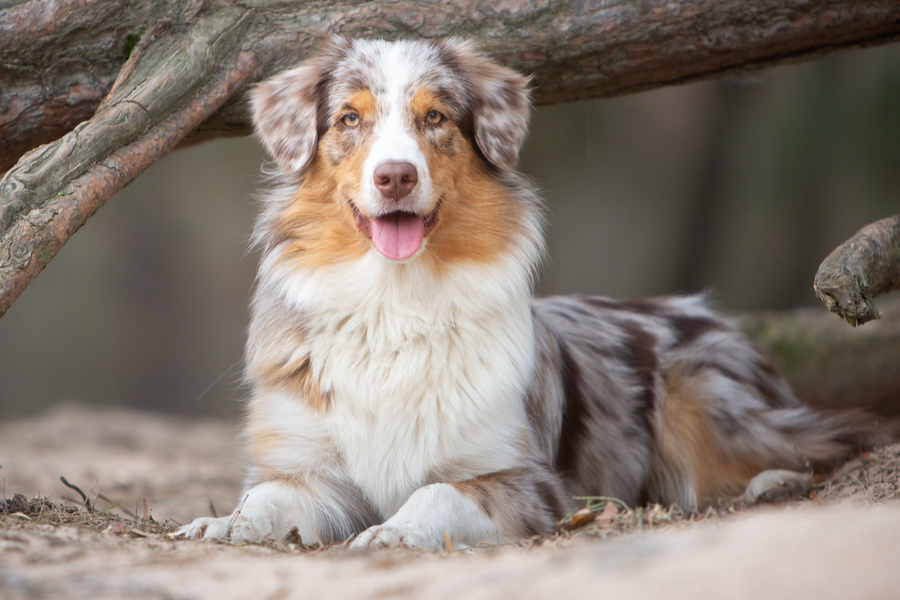


The history of the Australian Shepherd is a little bit obscure. Many experts believe these dogs originated in Spain, where they were used as working dogs by Basque shepherds in the Pyrenees mountains. Others believe this breed was developed in Britain by crossing collies and other shepherd-like dogs that were imported to Australia with shipments of sheep in the 19th century. During this time, the Aussies earned a reputation for being dedicated dogs that were also more intelligent than the average working dogs because they could perform without any shepherd around.
What is agreed on, is that the Australian Shepherd breed was mainly developed and meticulously bred in the United States, particularly in western states, such as Idaho and California, to tend to large flocks of sheep.
These dogs enjoyed a significant rise in popularity during the California Gold Rush in the mid-1800s. This caused a significant increase in demand for sheep to feed the onslaught of arriving miners. Furthermore, after the Civil war, these dogs were required to herd sheep because of the increased national need for wool and mutton.
The Australian Shepherd breed first arrived in the United Kingdom in the mid-1980s when Mr. and Mrs. Jueckstock brought it into the country. Since then, these intelligent dogs have gained popularity as both beloved family pets and efficient working dogs.
In recent times, Australian Shepherds have also been trained as guide dogs for the blind, canine companions for the disabled, and rescue dogs. They are even used as therapy dogs in hospitals and nursing homes.
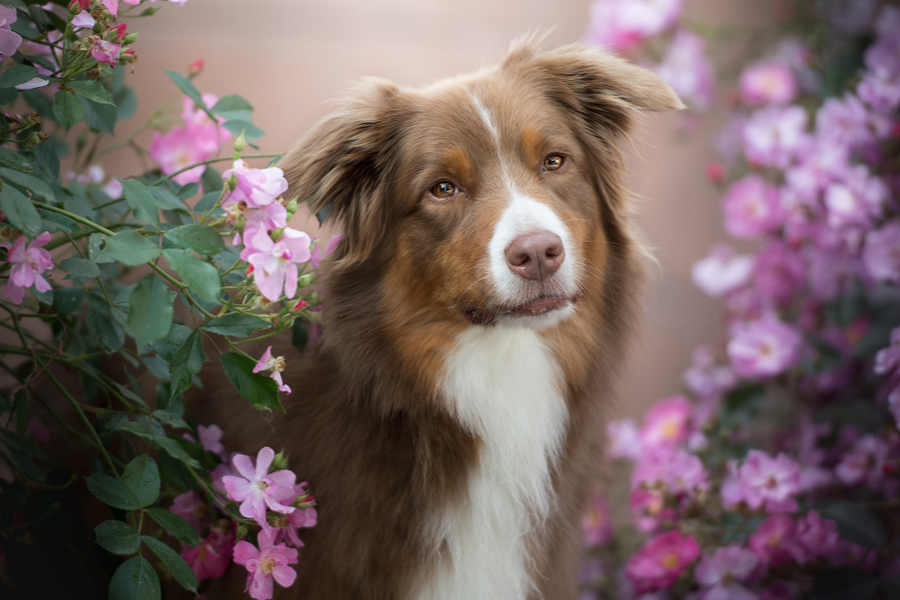
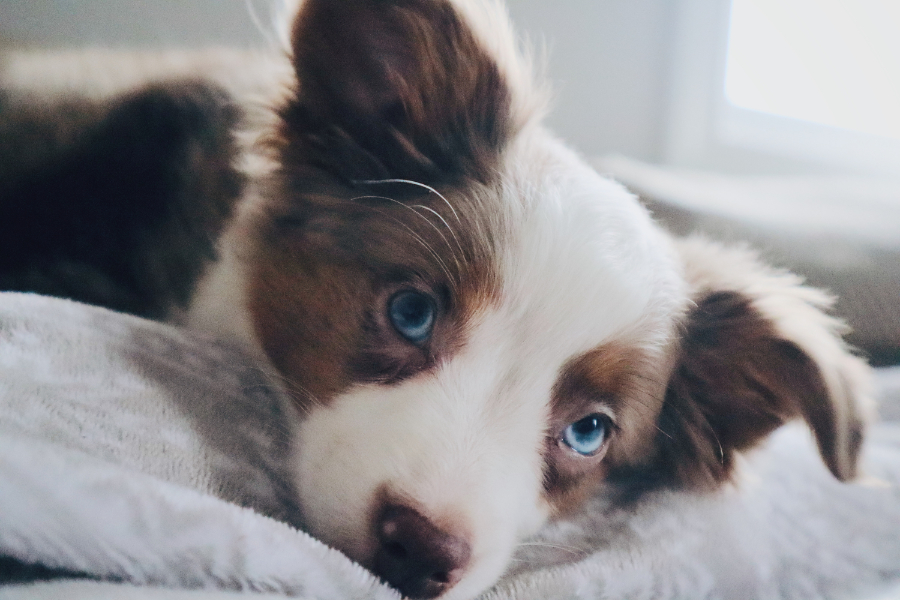
The Australian Shepherd is a well-balanced dog that appears to be a little longer than it is tall. They are well-muscled canines that boast an alert and keen look.
An Australian Shepherd’s head is somewhat rounded and well-proportioned to the size of the rest of the body. Their almond-shaped eyes can be brown, amber, or blue with marbling or flecks, depending on their coat colour.
Aussies have triangular-shaped ears that are slightly rounded at the tips and set high on the head. They are generally held either semi-erect or upright. They drop forward or to one side when the dog is alert or working. These dogs have strong jawlines with a perfect scissor bite. Their moderately long necks are held slightly arched, which adds to their alert and proud look.
Their forequarters are strong and muscular with long, flat, and well-laid-back shoulder blades. Their legs are straight and strong. The Australian Shepherd’s body is muscular with a level topline, deep chest, well-sprung ribs, and broad loins.
Hindquarters are well-proportioned in relation to the rest of the body. Their oval-shaped feet are compact with well-arched toes and well-padded pads. Their tails are medium length with a bit of feathering. Some dogs can be born with a naturally bobbed tail which is accepted as a breed standard.
The Australian Shepherd’s coat is medium in length and can be either straight or wavy. This breed is known to be very weather-resistant because of their dense undercoats. The hair is short on their head, ears, front legs, and lower legs, whereas the back of their legs has a modest amount of feathering.
Male Aussies have more mane compared to their female counterparts. Accepted coat colours according to the KC registration are:
All of these coat colours can come with or without tan points. White should never be the dominant colour on the head, particularly around the eyes and ears. However, white markings are accepted as follows:
Australian Shepherds were bred to protect, herd and guard. As a result, they have a huge amount of stamina and energy. So, they are not ideal for first-time dog owners or those who have a sedentary lifestyle.
These dogs will thrive with families who spend most of their day outdoors and who have an active lifestyle. Aussies are high-energy dogs and must be kept busy both physically and mentally to avoid boredom, which can lead to destructive behaviours.
Australian Shepherds form very strong bonds with their human companions. Once this bond has been established, these dogs will follow their owners wherever they go. They are also known to be very territorial, which can sometimes get out of control if they are not correctly trained. These clever dogs need to know their place in the pack to live a happy and contented life.
Because of their highly social natures, Australian Shepherds do not do well when left alone for long periods. These dogs are prone to developing separation anxiety, So, they are more suitable for families where one person is home for most of the day.
They may appear very serious with their jobs, but Aussies have a very playful side too. They love to entertain and be entertained. They are also known to be a little bit mischievous when the mood strikes them.
Given that they are energetic and active dogs, Australian Shepherds require regular physical and mental stimulation. While they are not as hyper as other collie-type dogs, Aussies are best suited to large homes with well-fenced, secure gardens, so they can safely roam whenever they want to. Australian Shepherds are not suitable for apartment living.
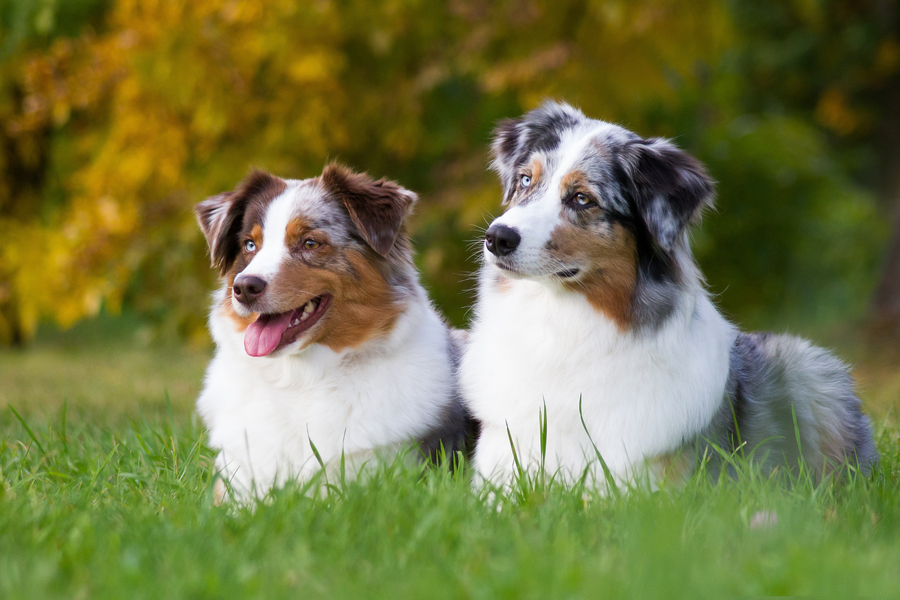
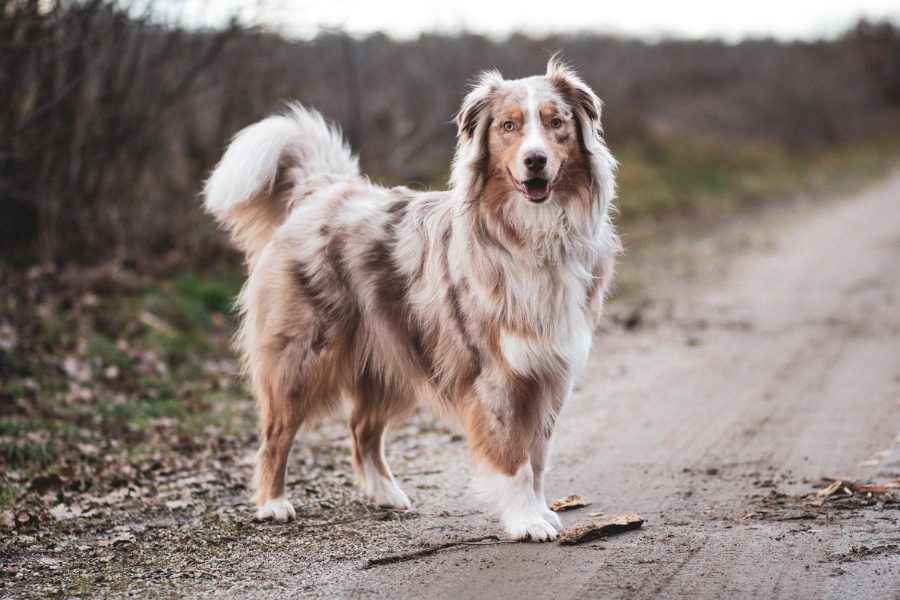
While they are intelligent, Australian Shepherds are not ideal for first-time dog owners because they need people who can train and handle them correctly. Aussies can quickly become dominant, unruly, and hard to manage if not given the right direction. Start training and socialisation early to ensure your pup grows up into a well-balanced, well-rounded, and easy to handle adult. With the right handling and training, these striking canines can become very loyal and obedient dogs.
Australian Shepherds need to be kept busy to be truly happy. It’s worth noting that these dogs may sometimes find their own way of doing things that may contradict your way! If this happens frequently, it’s vital that you seek help because the longer you wait to correct the issue, the harder it will be to fix. Enrolling them in a puppy training class can help tremendously in their development.
Australian Shepherds were bred primarily to be working dogs. So, they are not known to be high maintenance in the grooming department. Their coats are medium length and relatively smooth. However, due to their thick double coats, they do tend to shed a lot. Like other breeds, the Australian Shepherd will shed more during the Spring and Autumn months, where you may need to brush them more regularly to keep their coats in good condition. Bathing and trimming should be performed when needed, usually every few months.
Regularly check their ears for debris, dirt, and wax buildup. You can clean their ears by using a moistened cotton ball with an ear cleanser advised by your vet. Never push cotton swabs into the ear canals as this can cause injury. If you detect any foul smell, soreness, inflammation, swelling, or they continuously shake or scratch their head and ears, discuss it with your veterinarian because this may indicate an infection.
Daily toothbrushing is still best to avert tooth and gum diseases and bad breath. However, brushing at least twice a week is enough to remove any tartar and bacteria accumulation. Take advice from your veterinarian on which dental products perform best to effectively clean their teeth, tongue, gums, and mouth.
Once or twice a month (or as needed), trim their nails to keep them clean and tidy. Ensure you do this regularly because very long nails can be painful for your Australian Shepherd. As you trim their nails, inspect your dog’s paw pads for any cuts, abrasions, redness, or swelling.
Lastly, regularly check their body for wounds, inflammations, rashes, and other signs of infection. A dog’s eyes must be clear and clean with no redness or discharge. By doing this, you will be able to pick up on any potential health conditions early on.
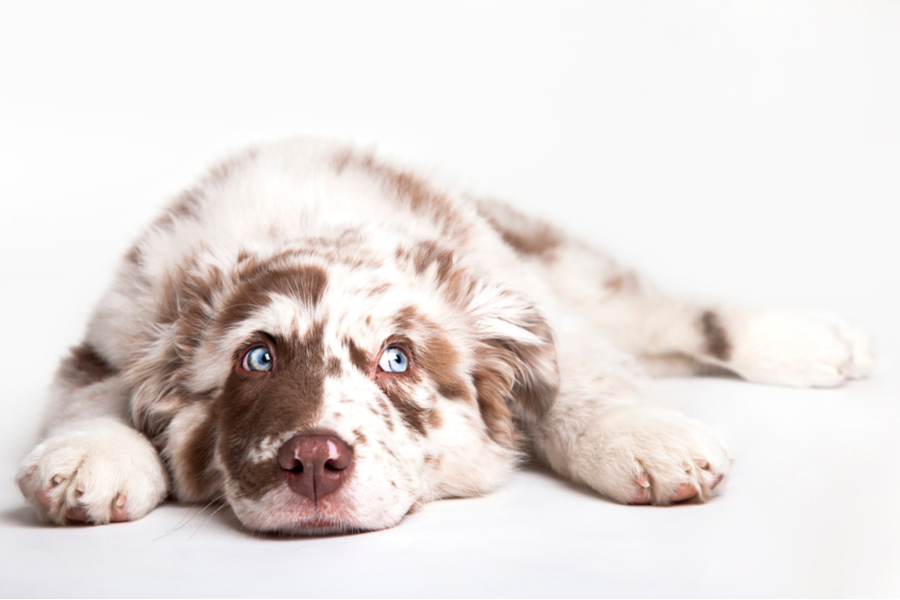
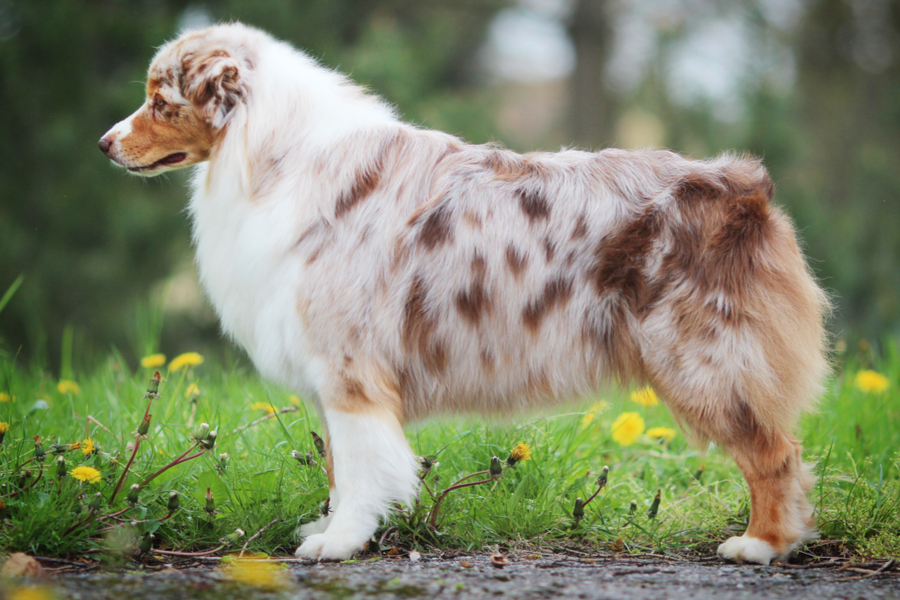
The average life expectancy of an Australian Shepherd is between 11 and 15 years when correctly cared for and provided with a good quality, well-balanced diet to suit their age and needs.
While they are known to be healthy and strong dogs, Australian Shepherds are prone to suffer from a few hereditary conditions which are worth knowing about if you want to bring home one of these energetic dogs. For peace of mind, always purchase an Australian Shepherd puppy from a licensed and reputable breeder. They will be able to perform tests to detect any underlying health issues.
Here are some of the more common health concerns seen in Australian Shepherds:
Australian Shepherds make excellent family pets and canine companions as long as they are given the physical and mental stimulation they need. However, their strong impulse to herd anything that moves means that they can take off herding children and any other pets that share the same environment. With this said, it’s imperative to supervise children while interacting with this dog to make sure everyone stays calm. Australian Shepherds have a strong domineering streak that can present itself at any time, especially if they have not been appropriately trained.
As for other pets in the same household, Aussies generally get on well with other animals, especially if they have grown up together. However, you will need to supervise all interactions between an Australian Shepherd and smaller or weaker animals because of their strong territorial streak. Always introduce new pets and other dogs gradually and in a controlled environment to make sure that their first meeting goes well.
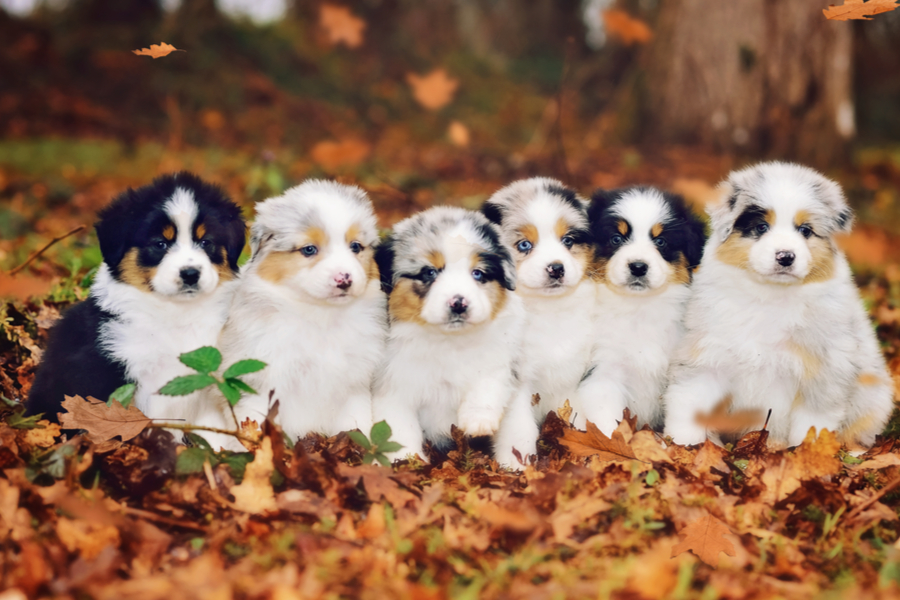

We can connect you with Breeders that are specialized in this particular breed.
See available puppies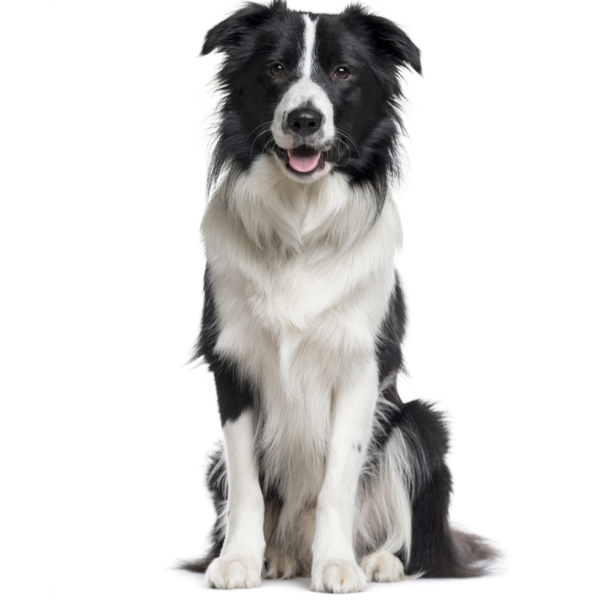
United Kingdom
Size : Medium
Coat : Long
Registration : KC, FCI, AKC
Exercise : 2 hour
Training : Easy
Grooming : Once a Week


Need some advice?
Whether you're a first time pet owner, an experienced pet owner, a new or long-time breeder, or just curious about pets, we've got you covered!

January 17, 2024
What Is The Personality Of Russian Blue Cats?
Russian Blue cats are most known for their distinctive shimmery blue-silver coat and piercing green eyes. However, this breed’s calm and gentle temperament is what makes them shine the most in the feline world.

January 17, 2024
10 Facts About Russian Blue Cat Breed
Russian Blues are one of the most aesthetically stunning cat breeds, with a gorgeous plush silvery coat and vibrant green eyes. However, it’s not only their appearance that is beautiful; their nature is too.

January 17, 2024
How To Choose The Right Cat Breed for You
Cats can make the most fantastic animal companions; they are adorable, friendly, and loving. However, not all felines are created equal. There are many different breeds, of which each has its unique personality traits.
Need some help?
Contact us to speak to our friendly advisor, who will gladly help you find your dream pet!



We are registered in England and Wales under registration number 12568840,
and our registered office is at 58-60 Kensington Church Street, W8 4DB London, England.
© 2023 The Pedigree Paws